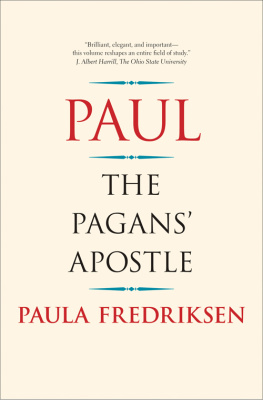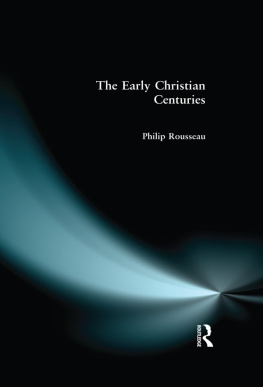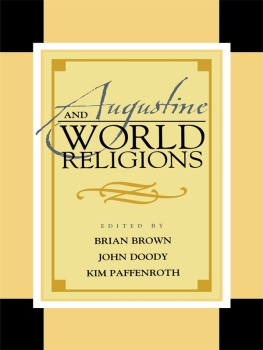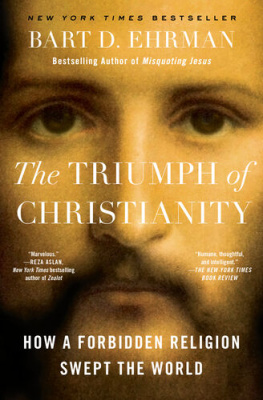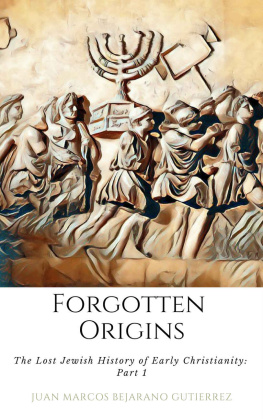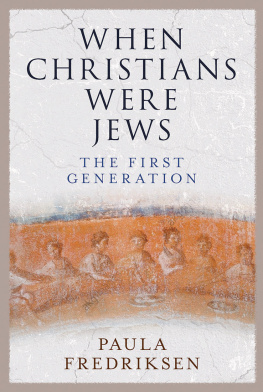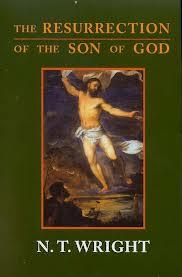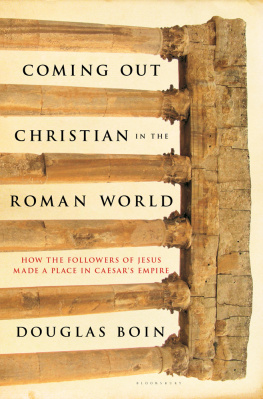Sin
Sin

THE EARLY HISTORY
OF AN IDEA
Paula Fredriksen

Copyright 2012 by Princeton University Press
Published by Princeton University Press, 41 William Street, Princeton, New Jersey 08540
In the United Kingdom: Princeton University Press, 6 Oxford Street, Woodstock, Oxfordshire 0X20 1TW
press.princeton.edu
All Rights Reserved
Library of Congress Cataloging-in-Publication Data
Fredriksen, Paula, 1951
Sin : the early history of an idea / Paula Fredriksen.
pages cm
Includes bibliographical references and index.
ISBN 978-0-691-12890-0 (hardback)
1. SinChristianityHistory of doctrinesEarly church, ca. 30-600. I. Title.
BT715.F74 2012
241.309015dc23 2011053128
British Library Cataloging-in-Publication Data is available
This book has been composed in Bodoni
Printed on acid-free paper.
Printed in the United States of America
10 9 8 7 6 5 4 3 2 1
For my sister, Lisa
19572010
Contents
Sin
PROLOGUE
Jesus of Nazareth announced the good news that God was about to redeem the world. Some 350 years later, the church taught that the far greater part of humanity was eternally condemned. The earliest community began by preserving the memory and the message of Jesus; within decades of his death, some Christians asserted that Jesus had never had a fleshly human body at all. The church that claimed the Jewish scriptures as its own also insisted that the god who had said Be fruitful and multiply now actually meant Be sexually continent. Some four centuries after Pauls death, his conviction that All Israel will be saved (Rm 11.26) served to support the Christian belief that the Jews were damned.
What accounts for this great variety in ancient Christian teachings? The short answer is: dramatic mutations in Christian ideas about sin. As these ideas grew and changed in the turbulence of Christianitys first four centuries, so too did others: ideas about God, about the physical universe, about the souls relation to the body, about eternitys relation to time; ideas about Christ the Redeemerand, thus, ideas about what people are redeemed from.
In this book I propose to tell the story of these dramatic mutations by focusing on seven ancient figures who together represent flash points in the development of Western Christian ideas about sin. , God, Blood, and the Temple, concentrates on two of these figures. The first, Jesus of Nazareth, left no writings of his own; but the gospel traditions from and about him, surviving in Greek, provide us with glimpses both of the historical figure and of the various refractions of his legacy from forty to seventy years after his death. Our second figure, Paul, never knew the historical Jesus; but he was in contact with several, perhaps many, of Jesus original followers, and he became a tireless spokesman for his own understanding of the gospel message, which he took to pagan audiences. Paul wrote (more accurately, dictated) letters to these communities, of which seven survive in the New Testament. Composed mid-first century CE, these letters represent the earliest writings of the Jesus movement. Together with the gospels, Pauls letters would be continuously interpreted and reinterpreted as later Christians contested with each other over the traditions true message and meaning.
of later orthodox tradition. Justins insistence that Jewish scriptures, understood spiritually, encode Christianity; that not only pagan worship but alsoand no lessJewish worship are sinful and religiously wrong; that salvation from sin is available uniquely through Christ, as understood uniquely by the true church; that such salvation requires the redemption of the body: all of these points of principle, which Justin articulated against his Christian competitors mid-century, will echo throughout the evolving tradition that claims for itself the status of orthodoxy.
, A Rivalry of Genius, compares, finally, the work of two of the towering intellects of the ancient church, Origen of Alexandria and Augustine of Hippo. Each of these men draws deeply on orthodoxys scriptures, Old Testament and New, and each draws no less deeply on the intellectual patrimony of late Platonism. Each stands within the parameters of orthodoxy as represented by Justin, and yet each produces ideas about sinand, thus, about the world, humanity, and Godthat could not contrast more sharply with those of the other. Of the two, Origen represents the road not taken by the church, whereas Augustine became a font of subsequent Latin Christian doctrine. In the epilogue, finally, I will bring together all of our figures to see once more how and where they differ from each other, and to offer some brief closing thoughts on the ways that the idea of sin, so important in antiquity, now seems to figure in contemporary American culture.

This essay draws upon my three Spencer Trask Lectures, which I had the privilege to give at Princeton University in October 2007. While I have substantially augmented my original presentation, I have kept my focus on the seven figures mentioned above precisely because they contrast and compare so vividly and, I think, usefully. A true historical survey of ancient ideas of sin would necessarily include many more figures, and it would be a lot longer than the present work. An investigation of gradual changethe incremental transformation of prior materials and traditionscould also, in a much longer book, wend its stately way. And a more phenomenological approach would dwell on the various ways in which ancient actors gave voice to the experience of sin, to their feelings in the face of moral failure, of regret, of the mysterious brokenness of the world. Such a study, in short, would be a very different book.
I have elected here instead to sketch a staccato history of early Christian ideas about sin by focusing on those moments that represent evolutionary jumpspoints of punctuated equilibrium, as evolutionary biologists say. I attend not to reflections on the experience of sin but instead to its very various conceptualizations; not to long-lived continuities, but to dramatic changes. Of course, the Bible itself, whether in its Jewish or its Christian forms, represents a fundamental line of continuity: all of our thinkers support their own views via appeals to its authority. But they each think about biblical tradition differently. And while Greek-speaking diaspora Jews centuries before Paul had already produced various fusions of Hellenistic and Jewish thought, I concentrate here on Paul himself, and on the ways that the apocalyptic message of the crucified and returning messiah charges and changes his view of the Hellenistic cosmos and of Stoic moral psychology. Finally, while various Christian communities could express many shades of conviction on the continuum between fervent belief in the imminent end of all things and (no less) fervent belief in historys longue dure, I concentrate on contrasts. Disjunctures are what I want to lift up here.
To begin to trace the rich and complex story of early Christian ideas about sin, we need to begin where they began: within the matrix of late Second Temple Judaism. Three first-century Jews will be our guides: in the land of Israel, John the Baptist and Jesus of Nazareth; and in the western, Greek-speaking Diaspora, the apostle Paul. Our journey through this early history starts at a time when leprosy and death defiled, when fire and water made clean, and when one approached the altar of God with purifications, blood offerings, and awe. We begin with the message that the god of Israel was about to redeem his people and establish his kingdom; and that message itself, for Christianity, begins by the River Jordan.
Next page

